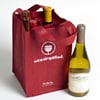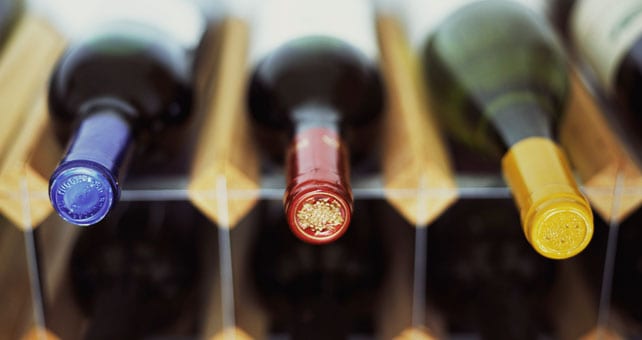Wines take on the characteristics of the vessels in which they are born. From ancient oak barrels to modern stainless-steel tanks, there's a science to creating what goes in your bottle.
Warm temperatures (70°F or higher) can cause wine to age more quickly. Also, fluctuations in temperature, exposure to light, and ongoing vibrations will cause wine to degrade rapidly. This all means that possibly the worst place in your home to store wines is on top of the refrigerator. Vibrations and heat from the unit can wreak havoc on that bottle.
Where, then, should you stash those bottles? Look for a cool, dark, vibration-free place—a cellar, if you have one—is ideal. Otherwise, store wine in a cabinet (even a crate or a carton will do) in the coolest, most temperature-stable place in your home. Store bottles on their sides to keep the corks from drying out.
About Leftovers
It's true that once opened, wine doesn't do well for the long haul. However, most wines will stay fresh and drinkable for a day or two after opening. Simply re-cork the bottle with the original cork and store it in the refrigerator (whether it's a red or a white). Just be sure to pull the red wine out of the fridge a few minutes before serving it the next time.
For Champagne and sparkling wine, if you purchase a clamshell-style stopper, your bubbles can last for a couple of days. If you don't have one on hand, simply put the bottle—unstopped—in the refrigerator. The bubbles may stay intact until the next night, or at least long enough to mix with orange juice for mimosas at brunch the next day.
While it's true that a wine's best qualities can begin to diminish as early as one day after it's opened, some wines actually taste better after a day or two. Next time you open a bottle that didn't bring love at first—or even fifth—sip, put the cork back in and give it another day. You may be pleasantly surprised.

 You are about to leave publix.com and enter the Instacart site that they operate and control. Publix’s delivery and curbside pickup item prices are higher than item prices in physical store locations. Prices are based on data collected in store and are subject to delays and errors. Fees, tips & taxes may apply. Subject to terms & availability. Publix Liquors orders cannot be combined with grocery delivery. Drink Responsibly. Be 21. For prescription delivery, log in to your pharmacy account by using the Publix Pharmacy app or visiting
You are about to leave publix.com and enter the Instacart site that they operate and control. Publix’s delivery and curbside pickup item prices are higher than item prices in physical store locations. Prices are based on data collected in store and are subject to delays and errors. Fees, tips & taxes may apply. Subject to terms & availability. Publix Liquors orders cannot be combined with grocery delivery. Drink Responsibly. Be 21. For prescription delivery, log in to your pharmacy account by using the Publix Pharmacy app or visiting 

